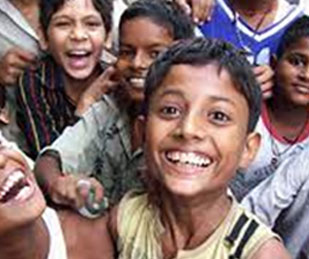Life expectancy for a child who has a Congenital Heart Defect
April 24, 2023 | Contributed by Preeti Kumar
Medical improvements have increased the life expectancy of children born with a congenital heart defect(CHD). Many children born with a heart defect, can now well into their adulthood, as long as they are diagnosed and treated on time. The Government, Pediatric cardiologists and children’s heart foundations are doing a lot of work to build awareness about the defects and treatment options available on the ground.
Child Heart Foundations are supporting the efforts of the government in building awareness about the disease in areas where access to health care continues to remain limited. They can do so with the help of corporate charity donations. Today, more and more children are getting access to treatment for their heart defects.
CHDs, are of different types, depending on the part of the heart where the defect lies. These also vary in the degree of severity from mild to severe. The long-term prognosis of the child depends on the type and severity of the defect. Many children with mild defects such as a small hole in the heart may not need any treatment. Children born with moderate to severe defects will need treatment to help them.
Factors Influencing Positive Outcomes of Children Born with a Congenital Heart Defect
With improvements in medicine many children with CHD are living longer. This is dependent on the following factors:
- Timely Diagnosis: a timely diagnosis is the first step to ensure a good outcome for the child. Many critical types of CHD present themselves before or right after birth and need to be treated immediately for the child to be able to survive. Other types of defects do not present themselves till later. Improved ultrasounds during ante natal stages and the availability of foetal echocardiography is making it possible for heart defects to be diagnosed well in time. If the foetus has a heart defect, prior information enables the medical team to be better prepared for the interventions required when the baby is born. Knowledge of the symptoms of CHD, also helps parents and the first line of doctors to look for the red flags and diagnose the condition on time.
- Treatment: there are many treatment options that are available today. These include surgeries, non-surgical procedures which are done in the Cath Lab, medications. In addition, innovations in technology such as 3D printing of the heart help ensure more positive outcomes for the child. Treatment of a CHD can be very expensive. For many families living in India where
 More and More children born with heart defects are being able to live longer
More and More children born with heart defects are being able to live longerthe monthly family income is equal to less than Rs 20,000 the cost of treating a heart defect is just out of their reach. But with the support of NGOs, children’s heart foundations and corporate charity donations many of these children are being able to get access to the right treatment and get another chance at life.
- Follow-up care: Follow-up care even after a procedure has been done is important to ensure long term success of the child. Complications can develop at a later stage and maintaining a close connect with the pediatric cardiologist helps ensure that there are no surprises and if any complications are developing, they are addressed well on time.
- Awareness: A lot of efforts are being made by the pediatric cardiologists, the Government and NGOS which is helping people know what the disease is, what are the red flags and hence reach out for help.
Hence with improvements in medical care children born with congenital heart defects are living longer. This also means that we will have many more adults who will have congenital heart defects, and we need to be equipped in supporting them as well. With improvements in medicine, improved awareness, greater financial support to the lesser privileged we are definitely slowly inching towards an India where no child dies due to a CHD only because of a lack of awareness and funds.

